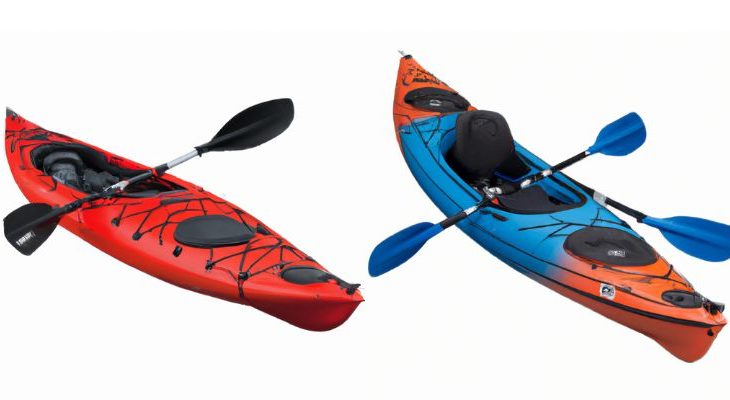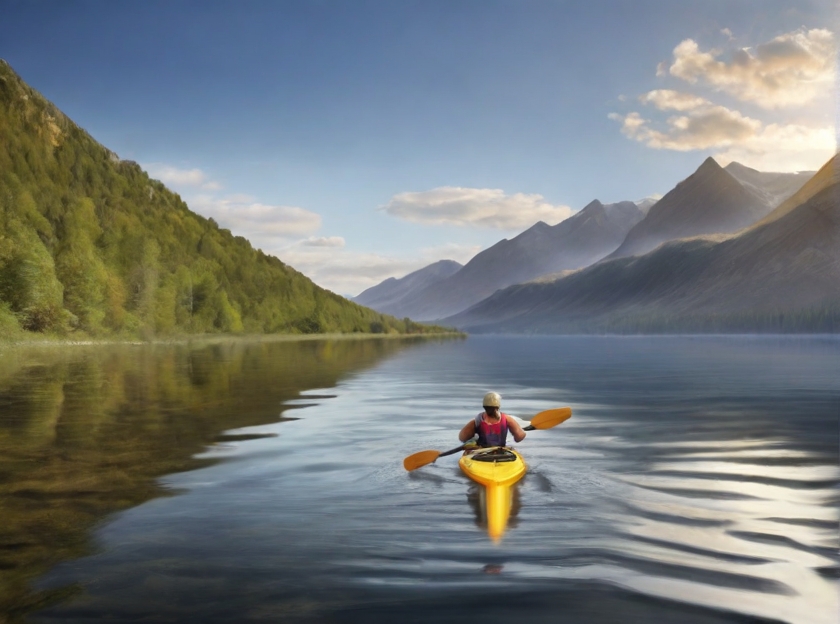Last updated on February 14th, 2024 at 12:53 pm
Last updated on February 14th, 2024
Kayaking is a popular outdoor activity that can be enjoyed by people of all ages and skill levels. Whether you’re paddling down a calm river, exploring a serene lake, or navigating through rapids, kayaking is a great way to get exercise, connect with nature, and enjoy some fresh air.
However, with so many different types of kayaks available, it can be overwhelming to choose the right one for your needs. This guide will help you understand the key factors to consider when choosing the best kayak for you.
Types of Kayaks:
The first step in choosing the right kayak is to understand the different types available. Here are some of the most common types of kayaks:
- Recreational Kayaks
- Touring Kayaks
- Sit-on-Top Kayaks
- Whitewater Kayaks
- Fishing Kayaks
Recreational Kayaks: These kayaks are great for beginners or casual paddlers who want to enjoy calm waters. They are usually wider and more stable than other types of kayaks, making them a great choice for families or those who want to take their dog along for the ride.
Touring Kayaks: These kayaks are designed for longer trips and are ideal for more experienced paddlers. They are usually longer and narrower than recreational kayaks, which makes them more efficient and faster through the water.
Sit-on-Top Kayaks: These kayaks are great for warm weather and are designed to be more user-friendly. They are more stable than other kayaks and are great for fishing, snorkeling, or just enjoying a day on the water.
Whitewater Kayaks: These kayaks are designed for navigating fast-moving water and rapids. They are shorter and more maneuverable than other types of kayaks, but they can be unstable and unsafe in calmer waters.
Fishing Kayaks: These are equipped with features such as rod holders and extra storage space.
Kayak Materials:
The material used to make your kayak can have a big impact on its performance and durability. Here are some of the most common materials used in kayaks:
Polyethylene / Plastic: This is the most common material used in recreational kayaks because it’s affordable, durable, and easy to repair.
Fiberglass: This material is often used in higher-end kayaks because it’s lightweight and offers excellent performance.
Kevlar: Kevlar is a strong and lightweight material that is often used in racing kayaks.
Inflatable: Inflatable kayaks are lightweight, portable, and easy to store, but they may not perform as well as other types of kayaks.
Kayak Size and Shape:
The size of your kayak will depend on your body size and the type of water you plan to kayak in. A kayak that’s too small or too big can be uncomfortable and even unsafe. Here are some things to consider when choosing the right size kayak:
- Length
- Width
- Depth
- Hull Shape
Weight Capacity: Make sure the kayak you choose has a weight capacity that’s suitable for your body weight and any gear you plan to bring.
Cockpit Size: The size of the cockpit can affect your comfort and performance. If you have long legs or need extra room to move around, you may want a larger cockpit.
Length: Longer kayaks are faster and more efficient, but they can be more difficult to maneuver. Shorter kayaks are more maneuverable but may not track as well.
Deeper kayaks offer more storage space and are more suitable for longer trips.
Different hull shapes are better suited for different types of water conditions.
Kayak Weight Capacity:
- Single Kayaks
- Tandem Kayaks
Single kayaks generally have a weight capacity of 250-350 pounds.
Tandem kayaks can accommodate two or three people and have a weight capacity of 500-600 pounds.
Kayak Features:
- Storage Space
- Paddle Holders
- Adjustable Footrests
- Cockpit Covers
- Rudder Systems
Best Kayaks for Different Needs:
- Best Recreational Kayak: Perception Sound 10.5
- Best Touring Kayak: Wilderness Systems Tsunami 145
- Best Whitewater Kayak: Dagger Mamba 8.1
- Best Sit-on-Top Kayak: Ocean Kayak Malibu Two XL
- Best Fishing Kayak: Old Town Topwater 120 PDL
FAQs:
What accessories do I need for kayaking?
Some essential accessories for kayaking include a paddle, life jacket, and appropriate clothing and footwear. Depending on the type of kayaking you plan to do, you may also need a spray skirt, helmet, and safety gear such as a whistle and flares.
Can I use a whitewater kayak for calm waters?
While it is possible to use a whitewater kayak in calm waters, it may not be the most comfortable or efficient choice. Whitewater kayaks are designed for maneuverability and stability in fast-moving water, which can make them feel tippy and unstable in calm waters.
Do I need to take lessons before kayaking?
It’s a good idea to take lessons before kayaking, especially if you’re a beginner. Lessons can help you learn the proper technique for paddling, safety tips, and how to navigate different types of water.
Do I need any special training or certification to kayak?
No, anyone can kayak, but it’s recommended to take a lesson or two to learn the basics of paddling and safety.
Can I use a recreational kayak in whitewater?
No, recreational kayaks are not designed for rough water and can be unstable and unsafe in fast-moving water. You should choose a whitewater kayak specifically designed for this type of activity.
Are sit-on-top kayaks suitable for colder weather?
Sit-on-top kayaks are generally better for warmer weather, as you’re more exposed to the elements. If you plan to kayak in colder weather, you may want to consider a closed-cockpit kayak, which can help keep you warmer and drier.
How do I know what size kayak to buy?
The size of the kayak you choose will depend on your height, weight, and the type of water you plan to kayak in. It’s important to choose a kayak with a weight capacity that’s suitable for your body weight and any gear you plan to bring.
Conclusion:
Choosing the best kayak for your needs can seem overwhelming at first, but by considering the factors outlined in this guide, you can make an informed decision. Remember to think about the type of kayaking you plan to do, the material, size, and any necessary accessories. With the right kayak, you can have a fun and safe paddling experience in any type of water.
References:
American Canoe Association. (n.d.). Kayaking. https://www.americancanoe.org/
REI Co-op. (2022). How to Choose a Kayak. https://www.rei.com/learn/expert-advice/kayak.html
Paddling Magazine. (2021). Kayak Types: Which Kayak is Best for You? https://paddlingmag.com/gear/kayaks/kayak-types-which-kayak-is-best-for-you/
OutdoorGearLab. (2021). The Best Kayaks of 2021. https://www.outdoorgearlab.com/topics/paddling/best-kayak
KayakHelp. (2022). Kayak Size Chart: What Kayak Length Do I Need? https://kayakhelp.com/





